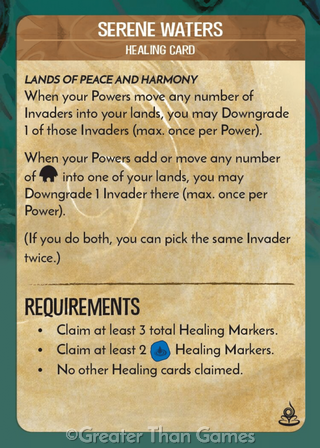Animal Upon Animal is fun for all ages including adults but is particularly popular with the four- to six-year-old crowd. In this game from Haba for 2-4 players, you compete to see who can stack all of your animals first. The stack you are building is shared (the French name of this game, ‘Pyramids Des Animaux’ may offer a better visual of what happens as the game progresses), which means you don’t have the luxury of setting up sturdy balancing positions for yourself. Everyone is dealt a hand of adorable wooden animal-shaped blocks. A crocodile block is placed in the center of the table and players take turns rolling the die and following the instructions.
The instructions on the die are really quite ingenious for moving the game along in clever ways. You may be instructed to place one animal on top of the crocodile’s back, or you might see two animals on the die, meaning you have to place one after another. You can also be asked to give one of your pieces to someone else to place or have the other players choose which of your animals to place next (and they will invariably select one that is harder to balance). The final option is a picture of a crocodile, which means you can extend the base block to have a larger area to balance animals upon.
The reason I think this game is particularly enjoyable for younger children starting school especially is because even if you make the tower fall, you don’t lose and the game doesn’t end. The maximum penalty if more than two fall off the pile is that you take two animals back into your hand and continue playing. This keeps the focus on dexterity, strategy, and making stacks of cute animals, and nicely swerves siblings blaming each other for quote ‘ruining the game’ or a fear of failure at a time when there are a lot of new expectations. (OK, I clearly have some some childhood Jenga tower collapse issues to explore but never mind that now). Haba games are great generally for this age group. Dragon’s Breath is another lovely Haba game that fans of Animal Upon Animal may enjoy.
Games for very little ones
And finally, even if they’re not ready for big school yet, that doesn’t mean they aren’t ready for gaming (some of my friends’ toddlers have attempted to prove this by taking out every game on the lowest shelf ready to play…).
At this age, the focus for parents choosing games is about two things, really – replayability, and doing something that looks like what the big kids are doing, so the big kids’ game doesn’t get wrecked (for example, my three-year-old niece recently ripped the Candyland board clean in half, in the most impressive WWE style rage quit I’ve heard about in years. It would have been more impressive, I suppose, if I hadn’t been the one who bought it for her and if it hadn’t been my favourite game when I was her age. I hope she is not still doing that when she’s 30, but it was epic nonetheless).
I know, you wouldn’t think there could be a game that would keep a two-and-a-half-year-old entertained, but there is actually an entire series of them by a lovely French toy and game company called Djeco. They have a whole host of adorable games that are both beautifully designed and suitable for toddlers, which is incredibly rare in the world of board games. These games look like a game and feel like a game, but are more about gamifying toddler skills like matching and sequencing and recognising colours. It’s really very clever and the history of this company originally had a child development focus. Add in materials and designs that appeal to a grown up aesthetic and these games are pretty great for everyone. We have several of their games in the shop and our games library but I will focus on Little Collect (in the first of the photos below).
Little Collect is for ages 2.5 to 5. It’s a cooperative game for two players and takes about ten minutes… or as long as attention spans allow. The object of the game ostensibly is to follow picture instructions on the cards you draw until you have completed a scene on the game board. But beware! There is mild peril! The pastoral tableau of adorable bunnies eating peas and carrots can be disrupted. If you are unlucky enough to draw a fox card, one bunny must be ominously removed from your board. It can be returned on a later turn to complete the game, but still. Hey ho, circle of life. Sun rise, sun set. As sure as autumn follows summer, soon enough, even your littlest Little Connect player will be starting school too.
And you know what that means: more time for gaming for you.




